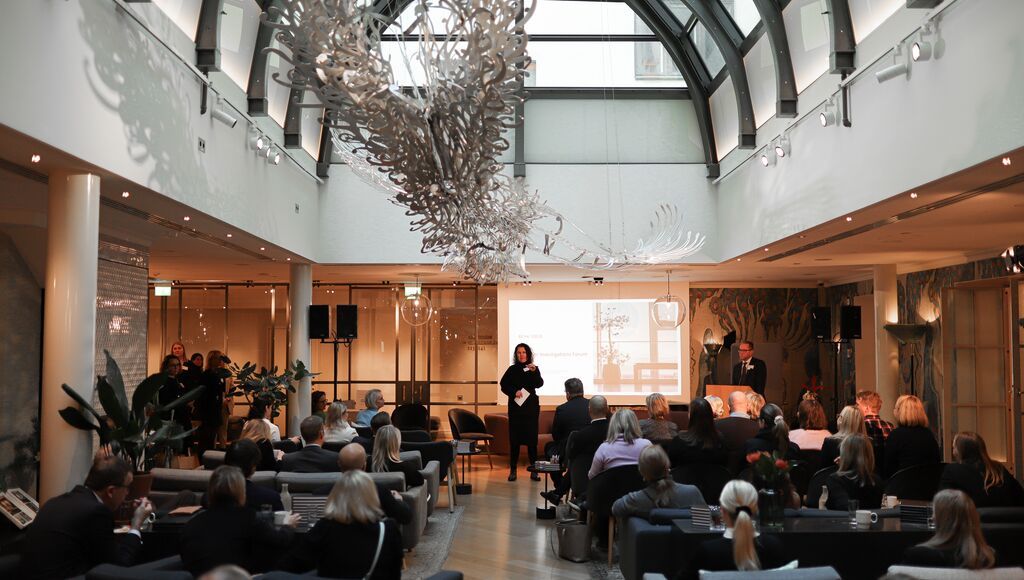
Insights | November 20, 2023
Roschier Investigations Forum (RIF) – The key takeaways
The first-ever Roschier Investigations Forum (RIF) has been held in Helsinki. The event began with a thought-provoking keynote by Pontus Selderman from Stora Enso and was followed by two dynamic panel discussions with leading professionals who have different perspectives and roles in the investigations process. The panelists were Tarja Jussila, Kirsi Nuotto, Julia Rajala, Olli Turakainen, Tuomas Kahri, Gisela Knuts, Kaisa Olkkonen and Sami Pauni.
As a law firm deeply engaged in compliance and corporate investigations, Roschier understands the challenges of this field – especially its confidential nature and the limited opportunities for open dialogue and peer learning. RIF was conceived as a solution: a forum for professionals to exchange knowledge and learn from collective experiences.
Adhering to The Chatham House Rule, the forum enabled a free exchange of information while maintaining confidentiality. We want to share some of the insights conveyed but in a way that does not make specific attributions to respect the privacy of the participants.
Key takeaways from RIF
Team dynamics and process management
The effectiveness and success of an investigation depends on the team. “When an investigation starts, it all comes down to the team”. The team members should be curious, unbiased, possess high integrity and strong leadership qualities.
In compliance matters, the unexpected is the norm. “You think you have seen it all, but with compliance you never seize to be surprised.” A flexible, adaptive process is essential alongside a well-prepared team. “Keep your head clear, have an objective point of view. Don’t trust you have all the facts: you need to check everything. What you must trust is your process, your team and your external advisors.”
The scarcity of experienced investigation professionals emphasizes the importance of building trusted internal and external networks. Your team should be multidisciplinary. “Go big in the beginning and make sure you have the whole team ready, it’s easier to scale down than up.” Internally, team up with legal, HR, communication, security, and IT specialists. Externally, you need your trusted advisors on speed dial. “They should be one phone call away because when things happen, they move fast.”
Continuous training and evaluation are important. Regularly testing and practicing response strategies ensure you are prepared for real-life scenarios. Even seasoned professionals encounter new challenges, underscoring the need for ongoing learning and adaptation. “Doesn’t matter how many years I have been doing this, there is always a new situation.”
Cooperation in investigations
Building trust is key to encouraging cooperation in investigations. “People-related problems have a tendency to appear suddenly and out of the blue. They create emotions, and when emotions enter the game, rationality exits.” Be as open and transparent as you can. “If they want a union representative with them, I think that helps, and sometimes we also offered to pay a lawyer for them. Our mission is to find out what has happened, and this sometimes creates a better cooperation”.
Complexities and nuances of investigations
Investigations often reveal complexities beyond initial appearances. The unfolding story can impact both the magnitude and direction of the investigation – or it turns out nothing happened. “The challenge is how the story changes and new information is added. You really need to keep your head cold and your work unbiased”.
For smaller companies, a well-defined playbook ensures consistent application of rules and consequences across all levels. “The same behavior should have the same consequences no matter where in the organization you are but that is easier said than done in a smaller firm. Having a process for investigations helps companies walk the talk.”
Investigating high-profile roles like CEOs poses unique challenges due to their critical impact on the company’s finances, brand and trust dynamics within the firm. “The CEO is the trickiest to investigate because the stakes are so high, and the visibility can be huge.”
Effective communication strategies
“With communication, first thing is to find out what has happened and try to understand what can unfold. You can always add to your communication, but it is much harder to backtrack. An investigation has so many layers and is complicated from several perspectives. During an investigation, keep the information in a very close circle. These things tend to spread inside and outside the organization, humans are very curious. We also live in an era of transparency so it’s not always so that there is a choice if we want to communicate or not – people can go live on Instagram and then we have to manage that.”
Establish solid, consistent messaging from the beginning. Choose a single spokesperson to maintain coherence in communication. Create a Q&A that makes the messaging more streamlined.
You need to balance transparency with discretion and respect for personal integrity, prepare for potential media attention while controlling the narrative through your chosen messages and channels. “It’s important to understand that things have a way of reaching media but there are things that you can choose. The message. The channels. The spokesperson.”